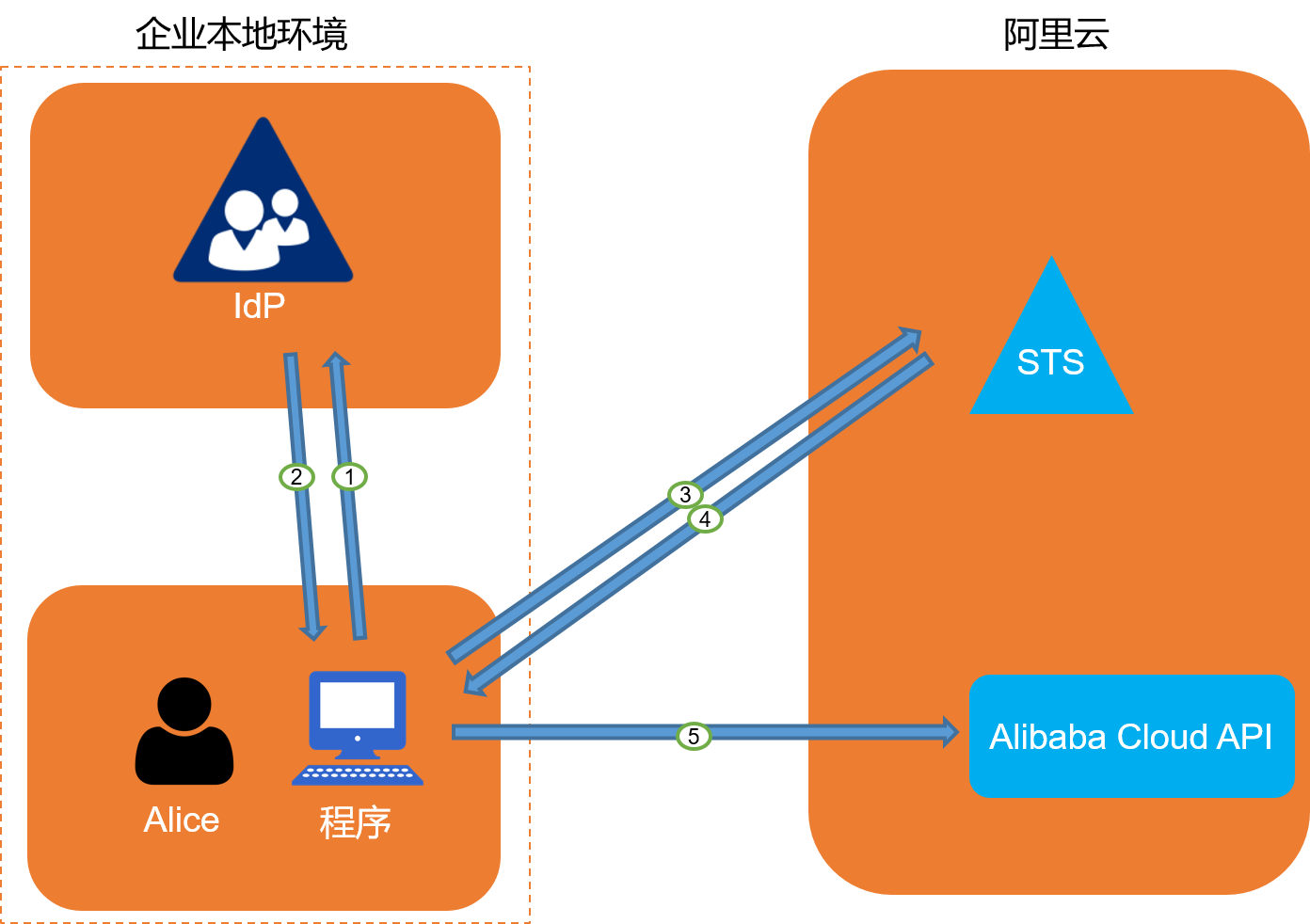阿里云与企业进行角色SSO时,阿里云是服务提供商(SP),而企业自有的身份管理系统则是身份提供商(IdP)。通过角色SSO,企业可以在本地IdP中管理员工信息,无需进行阿里云和企业IdP间的用户同步,企业员工将使用指定的RAM角色登录阿里云。
基本流程
企业员工可以通过控制台或程序访问阿里云。
通过控制台访问阿里云
当管理员在完成角色SSO的相关配置后,企业员工Alice可以通过如下图所示的方法登录到阿里云。

操作步骤:
Alice使用浏览器在IdP的登录页面中选择阿里云作为目标服务。
例如:如果企业IdP使用AD FS(Microsoft Active Directory Federation Service),则登录URL为:
https://ADFSServiceName/adfs/ls/IdpInitiatedSignOn.aspx。说明有些IdP会要求用户先登录,再选择代表阿里云的SSO应用。
IdP生成一个SAML响应并返回给浏览器。
浏览器重定向到SSO服务页面,并转发SAML响应给SSO服务。
SSO服务使用SAML响应向阿里云STS服务请求临时安全凭证,并生成一个可以使用临时安全凭证登录阿里云控制台的URL。
说明如果SAML响应中包含映射到多个RAM角色的属性,系统将会首先提示用户选择一个用于访问阿里云的角色。
SSO服务将URL返回给浏览器。
浏览器重定向到该URL,以指定RAM角色登录到阿里云控制台。
通过程序访问阿里云
企业员工Alice可以通过编写程序来访问阿里云,基本流程如下图所示。

操作步骤:
Alice使用程序向企业IdP发起登录请求。
IdP生成一个SAML响应,其中包含关于登录用户的SAML断言,并将此响应返回给程序。
程序调用阿里云STS服务提供的API AssumeRoleWithSAML,并传递以下信息:
阿里云中身份提供商的ARN、要扮演的角色的ARN以及来自企业IdP的SAML断言。
STS服务将校验SAML断言并返回临时安全凭证给程序。
程序使用临时安全凭证调用阿里云API。
配置步骤
为了建立阿里云与企业IdP之间的互信关系,需要进行阿里云作为SP的SAML配置和企业IdP的SAML配置,配置完成后才能进行角色SSO。
为了建立阿里云对企业IdP的信任,需要将企业IdP配置到阿里云。
更多信息,请参见进行角色SSO时阿里云SP的SAML配置。
企业需要RAM控制台或程序创建用于SSO的RAM角色,并授予相关权限。
更多信息,请参见创建可信实体为身份提供商的RAM角色。
为了建立企业IdP对阿里云的信任,需要在企业IdP中配置阿里云为可信SAML SP并进行SAML断言属性的配置。
更多信息,请参见进行角色SSO时企业IdP的SAML配置。
配置示例
以下为您提供了常见的企业IdP与阿里云进行角色SSO的配置示例: